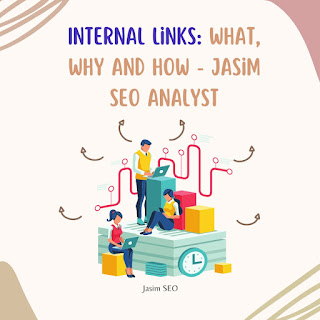When you think of SEO, links probably come to mind. But there are different types of links. Your site has internal links from page to page, outbound links from your site to another site, and inbound links from another site to your site.
Today I'm going to give you a quick overview of internal linking. Learn what internal links are, why they are important for SEO, and how.
What are internal website links?
Internal website links are links that point from one web page on one website to another web page on the same website.
Examples of common internal links:
- Main navigation at the top of a website
- Footer links at the bottom of a website
- Contextual links embedded in web page content
- Links to related content on other websites Content
- These links (aka "fragments" or anchor links) within a web page
Why are internal links important for SEO?
There are several reasons why internal links are important to a website's SEO strategy.
- User Satisfaction: Internal links help site visitors find content within your site. Besides providing useful and relevant information, her one goal of SEO is to keep visitors on her website longer.
- Increase Relevance: Internal links help search engines understand what your site is about. The way you organize your website's content via internal links makes it more relevant and on the first page of search results.
- Search Engine Help: Internal links help search engines discover more content. As search engine spiders crawl your site, links move from page to page to help discover and index more pages.
- PageRank Distribution: Internal links can increase the authority of a particular web page. When a high-privilege web page links to another page on the same site, the linked page is given a portion of the privilege.
- Strengthen ranking pages: Internal links, especially breadcrumbs, pass PageRank upwards and define a clear hierarchy of capabilities (silo identification).
How do internal links work with SEO?
One of the best internal linking strategies is to silo your SEO. SEO silos is a concept we devised in the 2000s.
The purpose of SEO silos is to organize website content via internal links as follows.
This improves the user experience. At the same time, silos make your site more relevant for specific searches (ie, the keywords you search for).
SEO siloing involves two main activities.
- Create an internal site structure via the physical directory. A physical silo is a method of organizing web pages based on their URL structure, using hierarchical website directories. For example, the URL directory structure looks like this: -to-herd-cats/pitfalls-to-avoid
- Create an internal link structure through virtual directories. Virtual siloing is a method of linking pages with similar topics via contextual links. For example, use anchor text to link from one blog post to another blog post on the same site.
Some sites may not be able to change their directory structure to implement physical silos
But more important is virtual siloing.
Internal Linking From Day One
Internal linking for SEO requires a lot of thought, planning, and execution. We recommend incorporating this strategy into all new websites and considering it each time you add a new web page to your site.
Regularly review your content, internal links, and silos. Make sure your silos are well organized and take advantage of any opportunities for internal linking within your content. Also, read our new link-building manifesto to learn more about how to get started with your link strategy.
How can we help you with your SEO needs? Contact us today for a free quote and consultation.

Comments
Post a Comment